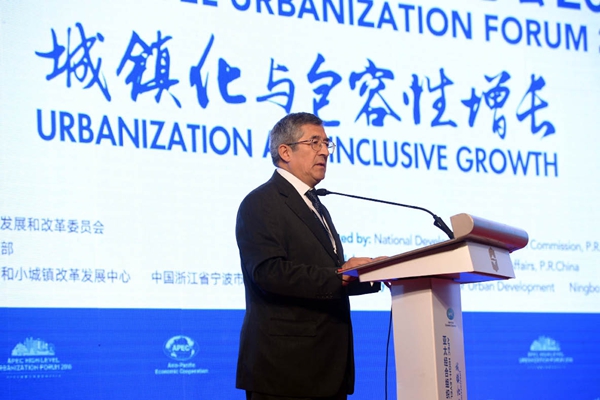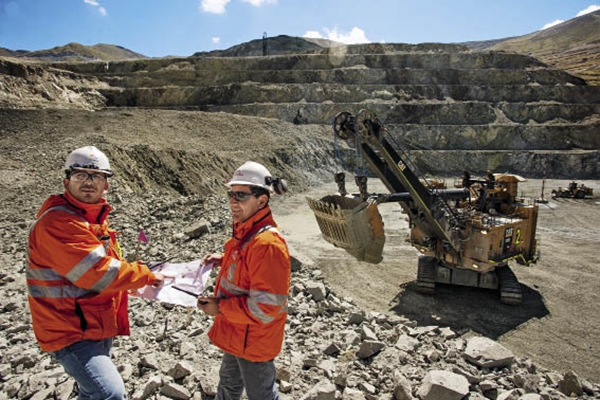By JUAN CARLOS CAPUÑAY
By JUAN CARLOS CAPUÑAY
A few months have passed since Pedro Pablo Kuczynski made his first foreign trip as president elect of Peru. He chose China for this maiden state visit in September to highlight the importance of bilateral relations between China and Peru. Chinese President Xi Jinping has been invited to Lima, capital of Peru, this month on the occasion of the APEC Economic Leaders’ Meeting there. The Chinese Foreign Minister, Wang Yi, also made an official visit to Peru in October. These important visits by three dignitaries from both countries signify that bilateral relations have never been better.

Peru is the only Latin American country to have signed three bilateral treaties: the Free-trade Agreement (in 2010), the Comprehensive Strategic Partnership (in 2013), and the Strategic Dialogue on Economic Cooperation (in 2014). The three treaties are now fundemental in China’s diplomatic strategy.
In November 1971, Peru became the second South American country to establish diplomatic relations with the People’s Republic of China. Since then, this relationship has strengthened and become a firm and reciprocal friendship, based on authentic mutual understanding. China represented in the 1980s – and still does to this day – the main market for the exportation of fish meal from Peru, which at the time was one of the country’s main sources of income. This propelled more humanistic exchanges that are today a national characteristic, and the establishment of Peruvian cuisine as potentially the biggest future qualitative export industry. These links have since become deeper, more diverse, and intense.
Through this process, the deepening relations between Peru and China have come to be based on a stable legal and economic foundation which sustains the will towards genuine understanding. These relations have an impact on different facets of our national development, and form an agenda that is clearly of benefit to our interests. Vestiges of China’s presence remain in the history of Peru, both in the Mochican culture and the Andes Mountain range area. They represent a particular advantage to Peruvian civil society, compared to other Latin American countries. It’s clear that there is a strong basis for the development of people-to-people contact by virtue of historic bonds, and the presence in Peru of the largest community of Chinese descendants in Latin America; the second largest in the western hemisphere.
Three Bilateral Mechanisms
This rich occurrence, reflected in millenary coincidences, implies that, given current circumstances, relations between Peru and China will continue to improve in the future. Peru is the only Latin American country to have signed three bilateral treaties: the Free-trade Agreement (in 2010), the Comprehensive Strategic Partnership (in 2013), and the Strategic Dialogue on Economic Cooperation (in 2014). The three treaties are now fundemental in China’s diplomatic strategy.

Peru’s Las Bambas copper mine, owned by China Minmetals Corporation, went into full operation in 2016.
The Free-trade Agreement expanded trade between China and Peru to US $16 billion in 2015, making China Peru’s top trade partner. The result of this commercial exchange expresses the will of both countries to create a plan that will generate mutual benefits, as well as Chinese support regarding productive capacities. During his recent visit to China, President Pedro Pablo Kuczynski stated at each meeting that the purpose of his visit was to promote investments that will transform Peru’s production structure and modify the country’s system of exports. This was taken on board by the Chinese, who expressed interest in investing in Peru’s industrial parks and transformation of its production.
The Sino-Peru Comprehensive Strategic Partnership represents the ideal setting for economic enhancement, technology exchanges, and mutual understanding with respect to regional development and connectivity. Currently, China is the biggest investor in the Peruvian mining sector, constituting 34 percent of investment. It is also the top market for Peruvian exports, and a close partner in Peru’s efforts to interact with the Asia-Pacific economy.
The Strategic Dialogue on Economic Cooperation aims at strengthening the cooperation between our two countries, promoting investments, and transferring technology to the energy, mining, infrastructure, productive capacity, and industrial development sectors. Manifestations of Chinese investors’ interest will be reflected in the feasibility of projects and their contributions and transcendence in relation to Peru’s positioning in the global market.
Peru is a land of opportunities for foreign investment, with large numbers of resources that can be processed for exporting purposes. The composition of commercial treaties that Peru has established guarantees the said investors’ privileged access to a market that encompasses more than 50 percent of the world population. Peru’s participation in APEC and its future inclusion in the Organization for Economic Co-operation and Development (OECD) have made it a reliable investment partner.
The important exchange of visits between the heads of both governments in 2016, in Beijing as well as in Lima, constitutes the best possible way of celebrating the 45th anniversary of the establishment of diplomatic relations between Peru and China.
The Pacific Ocean does not separate us, but rather represents the 21st Century Maritime Silk Road, which will be used to expand our mutual interests. It is essential that China and Peru work together to fulfill that destiny.
JUAN CARLOS CAPUÑAY is Ambassador of Peru to China.